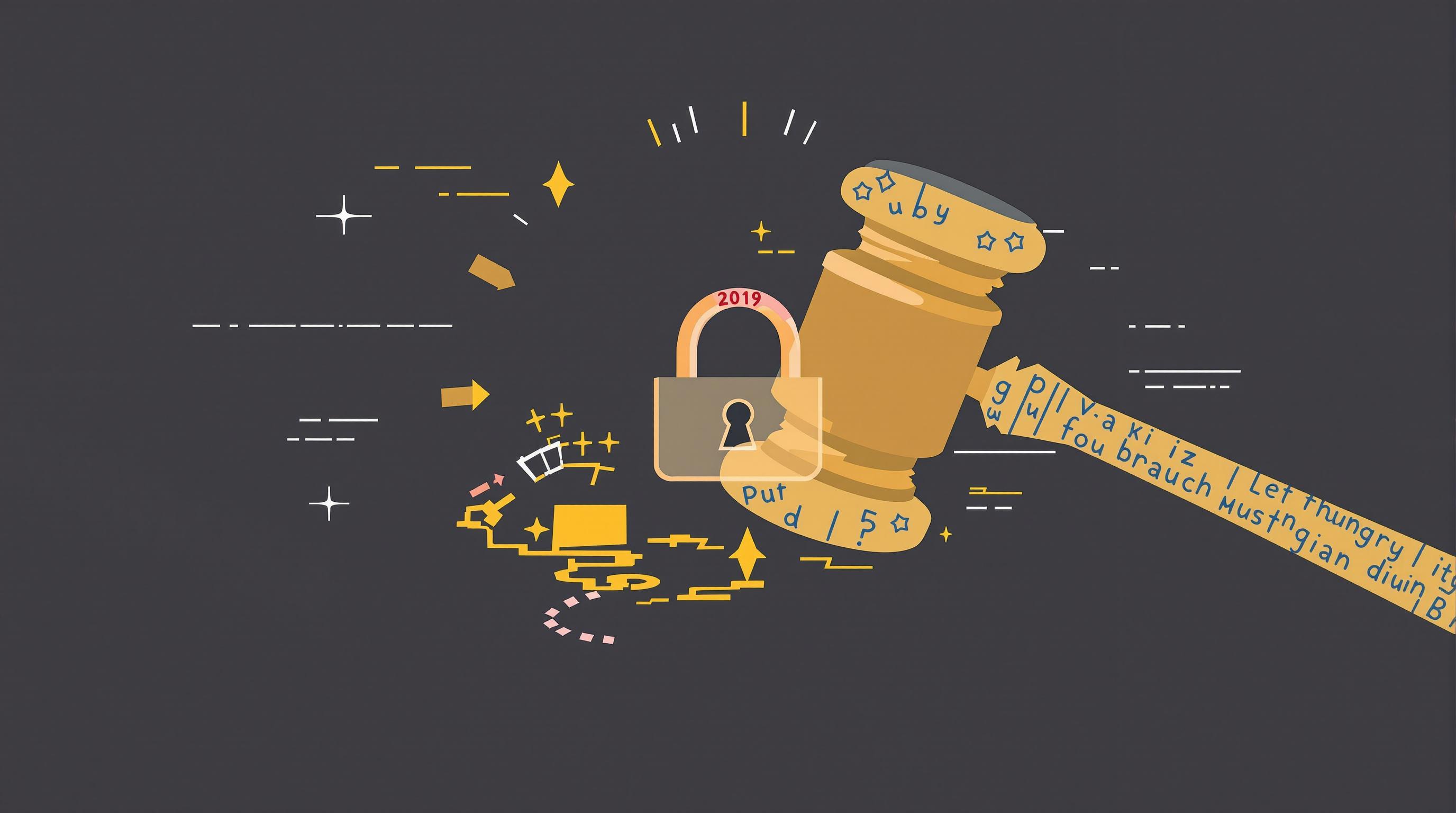Related Articles
- Unraveling the Silent Influence of Biometric Data on European Privacy Safeguards and Compliance Challenges
- Top 6 Game-Changing Franchise Analytics Platforms Launched Since 2019 for Strategic Brand Expansion
- Hidden Pitfalls in Using NDA Templates for Cross-Cultural Tech Collaborations: Lessons from Unexpected Legal Quagmires
- Top 6 Emerging AI-Powered Negotiation Tools Transforming Product Partnership Deals Since 2019
- Top 6 Under-the-Radar Business Licensing Tools Released Since 2019 That Outsmart Traditional Systems
- How Emerging Environmental Regulations Are Secretly Reshaping Small Business Structures in Unexpected Ways
Hidden Pitfalls in Using NDA Templates for Cross-Cultural Tech Collaborations: Lessons from Unexpected Legal Quagmires
Hidden Pitfalls in Using NDA Templates for Cross-Cultural Tech Collaborations: Lessons from Unexpected Legal Quagmires
Using NDA templates in cross-cultural tech collaborations seems straightforward but often leads to hidden legal troubles due to cultural nuances, jurisdictional differences, and varying business etiquettes. This article dives into unexpected pitfalls, illustrated by real cases, statistics, and expert insights, offering lessons for global tech innovators.
Picture this: a Californian startup eager to collaborate with a Japanese software company downloads a popular NDA template online, tweaks it slightly, and sends it over. Everything appears smooth until months later, a crucial intellectual property dispute surfaces, dragging both sides into expensive, draining legal battles. This comedy of errors is more common than you'd expect in cross-cultural tech projects.
“Nearly 60% of startups engaging in international collaborations admit they underestimated the complexity of legal agreements,” reveals a 2023 survey by GlobalStartup Advisors. Many rely heavily on standard NDA templates, assuming one-size-fits-all is acceptable, but in reality, local customs and laws can dramatically alter the meaning and enforceability of these documents.
When Templates Meet Tradition: The Jurisdictional Jungle
A lawyer from Hong Kong once told me, “Your NDA might say it's governed by California law, but if the other party is in China or Europe, enforcing that clause is like trying to catch smoke with your bare hands.” Indeed, enforcing NDAs across borders is notoriously difficult, especially when the template fails to clarify dispute resolution venues or applicable law with cultural and legal recognition.
In one stark example, a European tech startup signed an NDA with an Indian outsourcing firm using a generic template. When a trade secret leak occurred, the European company was surprised to find that Indian courts required different evidence and had distinct confidentiality norms, delaying the case for nearly two years. Local legal practices, like differences in contract formalities, can nullify crucial parts of an NDA.
Not All “Confidential” Areas Are Equal
The concept of what constitutes “confidential information” varies widely. In some cultures, oral agreements or handshake deals carry weight, while others demand meticulous written definitions. NDA templates typically rely on hardline definitions that might be too narrow or too broad, creating loopholes or compliance nightmares.
Take South Korea, where informal sharing of ideas is a cultural norm in initial tech talks. If your NDA template excludes verbal communications or informal disclosures, it might inadvertently void protections you rely on. This case illustrates why negotiating confidentiality boundaries is not just legal, but cultural strategy.
“Lost in Translation” – Language and Interpretation Risks
Consider the failure in a collaboration between a German AI firm and a Brazilian data analytics company, where translation errors in the NDA caused misunderstandings on data privacy obligations. The Brazilian party thought the data was anonymized, while the Germans expected raw data protection, leading to mutual accusations and a stalled project.
English is often the default language for international contracts, but that alone doesn’t ensure clarity. Subtle legal terms can carry different implications; for example, the word “disclose” might be interpreted distinctively. Investing in bilingual legal counsel or precise translations often saves millions down the line.
Statistics to Consider
According to the International Association for Contract & Commercial Management (IACCM), 43% of contract failures worldwide can be attributed to miscommunication or poorly tailored templates. This reflects a widespread problem, not just isolated incidents.
Beyond Legalese: Understanding Cultural Business Norms
Let's chat honestly: each country has a different style of business relationships. In German engineering circles, stringent contracts and details matter; in India, building trust might be prioritized over paperwork initially, and in Brazil, relationship building often guides formalities.
Failing to recognize these differences means your shiny NDA template might be perceived as rude, too rigid, or even suspicious—sometimes causing partners to withdraw or stall negotiations. Cultural intelligence, especially in tech, isn’t just HR fluff—it’s a core competency for effective agreements.
Case Study: Silicon Valley Meets Seoul
A Silicon Valley giant once faced backlash when using an NDA template in a Korean joint venture where its formality clashed with the Korean partner’s preference for gradual trust-building. The rigid document created distrust, derailing the entire project before it launched. Later, a customized approach blending formal clauses with culturally sensitive practices smoothed the path.
Ignoring Local Data Protection Laws is a Disaster Waiting to Happen
With data privacy laws tightening globally (think GDPR in Europe, CCPA in California, and similar rules emerging everywhere), using NDA templates that omit data protection clauses — or that presume US standards suffice everywhere — can cause severe compliance violations.
There was a notable incident when a UK startup shared data under an NDA template that didn’t adequately address GDPR requirements with a partner in Eastern Europe. The breach led to hefty fines, wasted resources, and a permanent rupture in partnership.
The False Economy of DIY NDA Templates
Companies, especially startups, love free or low-cost NDA templates because they seem like an easy fix. However, this “saving” often leads to hidden costs. Hiring skilled attorneys who understand cross-cultural legal landscapes pays off by avoiding costly disputes.
An experienced international lawyer charges on average $300–$500 an hour, but the average cost of a single cross-border IP litigation case can exceed $200,000, according to the International Legal Insights Report, 2022. Investing early in tailored NDAs is a strategic hedge.
Humor Break: The NDA That Wanted to Travel
Once upon a meeting, a startup sent their generic English-only NDA to a partner in France. The partner complained, “This document travels less than I do.” Without proper localization, NDAs can seem as awkwardly out-of-place as a tourist asking for sushi in a Bavarian beer hall.
Navigating Negotiations: Flexibility Is Your Friend
While templates provide a starting point, rigidly enforcing them without room for negotiation can kill deals. Cross-cultural tech collaborations thrive on flexibility and mutual understanding. That means accommodating concerns, clarifying ambiguous terms, and gradually refining NDAs collaboratively.
Summary: Lessons Learned and Best Practices
To sum up, blindly using NDA templates in cross-cultural tech partnerships can lead to legal misfires, misunderstandings, and broken trust. The key takeaways are:
- Engage legal counsel versed in relevant jurisdictions and cultures.
- Customize confidentiality definitions to fit cultural communication styles.
- Include jurisdiction, dispute resolution, and data protection tailored to all parties.
- Translate documents professionally and ensure mutual understanding.
- Approach NDAs as living documents that evolve with relationships.
By integrating legal wisdom with cultural empathy, tech innovators can protect their intellectual assets without alienating partners.
Final Thoughts from a 52-Year-Old Global Correspondent
Having witnessed dozens of tech collaborations falter due to careless NDAs, I urge young entrepreneurs and seasoned execs alike: treat confidentiality agreements as bridges, not barriers. Invest time in dialogue, adapt documents to context, and never underestimate the power of cultural nuances. Your global partnerships—and bottom line—will thank you.




